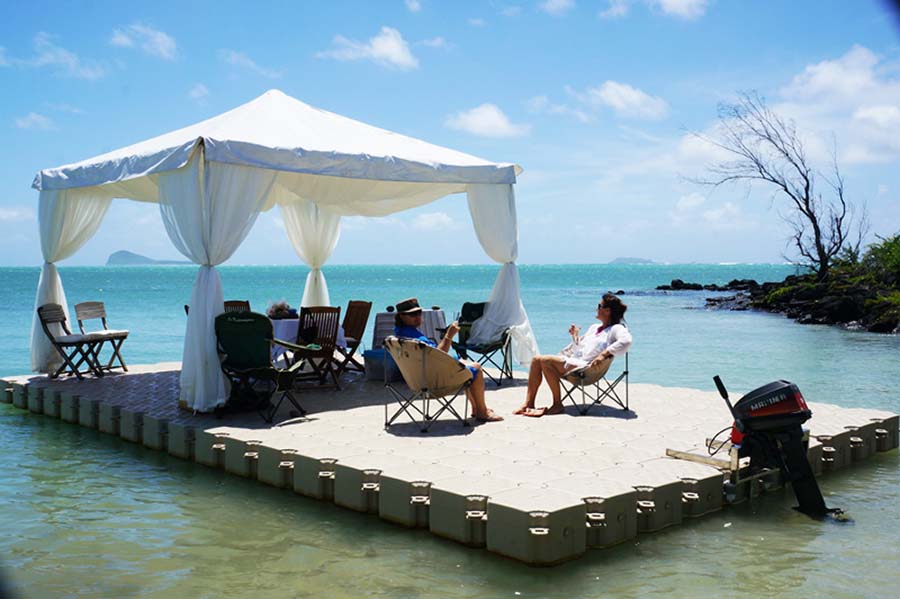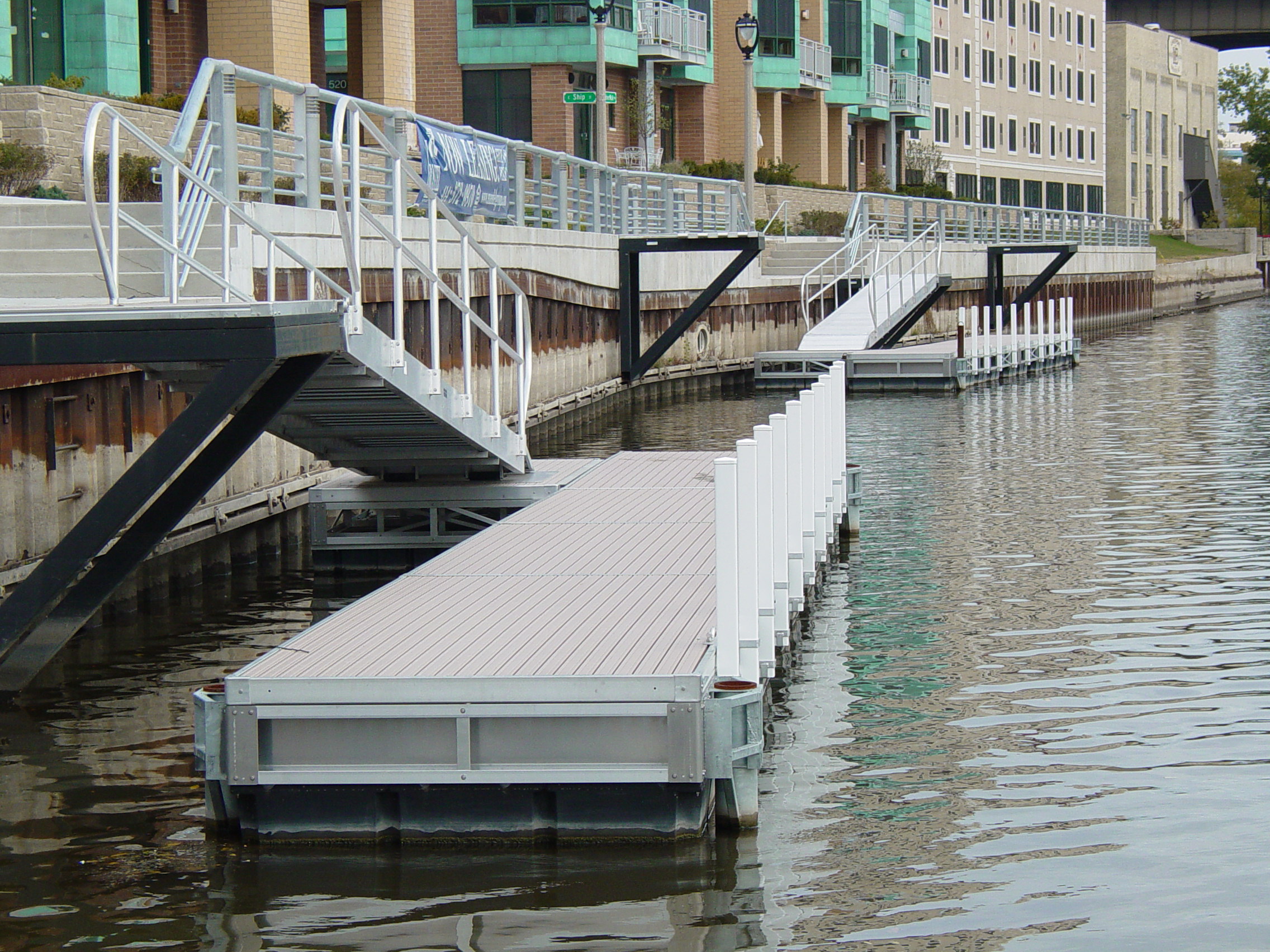Produce the Perfect Docking Solution With Floating Docks
Floating docks present a functional remedy for a variety of maritime requirements, adapting flawlessly to rising and fall water degrees and varied vessel types. As we check out the important components that add to the performance of floating docks, numerous essential factors pertaining to stability and upkeep will emerge, increasing questions regarding just how to optimize your docking experience.

Advantages of Floating Docks
Floating docks offer various benefits that make them a perfect selection for various maritime applications. Unlike repaired docks, floating docks rise and autumn with the trend, making sure constant accessibility for vessels.
In addition, floating docks are typically simpler and quicker to set up contrasted to conventional set structures. Their modular style enables uncomplicated setting up and disassembly, facilitating upkeep and moving when required. This versatility is especially useful for short-lived applications or in environments where problems may alter.
Floating docks additionally often tend to be extra eco-friendly, as they reduce interruption to the seabed and bordering marine ecosystems. Their buoyant nature reduces the risk of damage to aquatic life, promoting a much healthier setting. These docks can be personalized to fit various vessel dimensions, ensuring that they fulfill certain functional demands.
Eventually, the combination of versatility, convenience of installation, and ecological factors to consider makes floating docks a highly reliable solution for a variety of maritime needs.
Selecting the Right Products
Selecting the appropriate products for floating docks is vital to make certain long life, security, and durability. The choice of materials directly impacts the dock's performance in different ecological conditions, including direct exposure to water, sunlight, and prospective wear from aquatic website traffic.
Typical materials used for floating docks consist of light weight aluminum, wood, and high-density polyethylene (HDPE) Light weight aluminum is light-weight, corrosion-resistant, and needs very little maintenance, making it an excellent choice for longevity. Nevertheless, its first expense can be greater compared to various other products.
Timber, while cosmetically appealing and providing a traditional appearance, can be at risk to rot and bug damages otherwise effectively treated. Utilizing pressure-treated timber or naturally sturdy species like cedar or redwood can mitigate these concerns.
HDPE is a preferred selection due to its resistance to UV rays and chemicals, along with being eco-friendly. floating dock builder. It is offered and light-weight in various colors, permitting for personalization
Eventually, the right product choice will depend upon details requirements, consisting of spending plan, desired visual appeals, and environmental considerations. Mindful examination of these variables will lead to a resilient and successful floating dock option.
Layout Considerations for Security
When developing floating docks, guaranteeing security is an essential aspect that can dramatically affect their capability and safety and security. Stability in floating dock style is affected by different aspects, including buoyancy, weight circulation, and the arrangement of parts. An optimum buoyancy system need to make use of products that offer sufficient lift while reducing weight. This equilibrium guarantees that the dock stays above water, even under varying tons.
Weight circulation is crucial; uniformly dispersing lots throughout the dock avoids tilting and boosts stability. This can be achieved with calculated positioning of docking tools, such as fenders and cleats, in addition to appropriate spacing of drifts. In addition, the measurements of the dock need to be thoughtfully intended. Wider styles can provide increased security, particularly in rough water conditions, while longer docks might call for additional assistances to avoid drooping.
Another essential factor to consider is the ecological influence, including wave action and wind. Integrating functions such as sidewalls or skirting can help mitigate the impacts of environmental forces, preserving security in unfavorable problems. Eventually, a combination of thoughtful style, product option, and understanding of ecological variables will generate a floating dock that fulfills both stability read this article and safety needs.
Installation Tips and Methods

Following, secure the necessary authorizations and stick to local guidelines, which might dictate installment methods and environmental considerations. If required, engage a certified specialist experienced in floating dock setups. Usage top quality products designed for marine settings to boost resilience and durability.
When placing the dock, align it alongside the shoreline to promote simple gain access to. Make certain that the anchoring system is robust, using concrete blocks or helical anchors to maintain the dock against wind and wave action. It's essential to represent seasonal water level fluctuations, consisting of potential ice motion in cooler environments.
Throughout the installment, ascertain the dock's floatation and security prior to completing the web anchoring. Frequently examine the installment for any indications of wear or damages. By complying with these methods and tips, you can attain a protected, practical, and cosmetically pleasing floating dock setup that fulfills your needs.
Upkeep and Treatment Standards
Caring and maintaining for floating docks is essential to prolonging their life expectancy and ensuring safe usage. Normal examinations need to be carried out to recognize any kind of signs of wear, damage, or aquatic development. Search for cracks, loose fittings, or stained areas on the dock's surface area, as these problems can endanger architectural honesty.
Cleaning is crucial. Make use of a pressure washing machine to eliminate algae, barnacles, and particles, which can gather over time. For stubborn development, take into consideration ecologically friendly cleaning agents that won't hurt marine life.
In addition, examine the mooring lines and supports often to guarantee they are totally free and safe and secure from deterioration. Change any frayed or harmed lines immediately to keep security.
Throughout severe climate, such as storms or freezing problems, take preventive procedures. Safeguard the this contact form dock with extra mooring lines and, if possible, get rid of any kind of removable elements to stop damage.
Conclusion
In final thought, the execution of floating docks presents a reliable and functional docking option appropriate for various maritime applications. With correct setup and routine upkeep, floating docks can supply effective and trusted docking experiences for a wide variety of vessels.
As we check out the necessary aspects that contribute to the effectiveness of floating docks, several key factors concerning stability and upkeep will arise, elevating questions concerning just how to enhance your docking experience. Unlike dealt with docks, floating docks surge and loss with the tide, making certain regular availability for vessels.When designing floating docks, ensuring security is a basic element that can considerably impact their capability and security. Stability in floating dock layout is affected by various factors, consisting of buoyancy, weight distribution, and the setup of elements. Inevitably, a combination of thoughtful layout, material choice, and understanding of environmental variables will produce a drifting dock that fulfills both security and safety and security requirements.